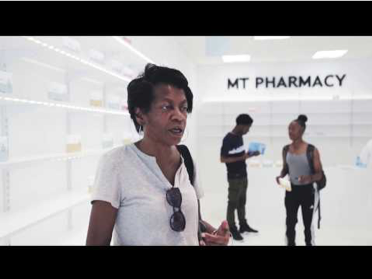Clinical Trial Educational Initiatives Can Improve
This article will analyze industry clinical trial initiatives and investigate strategies on how to improve impact on people.
In my experience interacting directly with patients, I have run across many who have never heard of clinical trials and those patients are often skeptical about participation. For instance, when I was a research coordinator at Stanford and was recruiting patients for an oncology clinical trial, I ran across a husband and his wife, who was suffering from breast cancer. When I approached the patient about the prospect of participating in a clinical trial, the husband defended his wife, stating he did not want his wife to be a part of a “guinea pig experiment.” To this day, I still encounter many people who have no idea what clinical trials are; what has changed, nevertheless, is most seem interested in learning more.
Education and awareness about clinical trials has been proven to improve the likelihood of participation [1], and advocacy groups and the industry are starting to embrace patient education and awareness, as they realize the importance of how educational initiatives can improve clinical trial participation. However, are these initiatives enough to cut through the clutter in a world filled with content competing for peoples’ attention? This article will analyze industry clinical trial initiatives and investigate strategies on how to improve impact on people.
What is The Industry Doing to Raise Awareness?
Of recent, several industry initiatives aimed at changing public perceptions on clinical trials are developing, and many are expanding on social media. TransCelerate launched the One Person Closer campaign to improve healthcare provider and patient perceptions of clinical trials [2]. The campaign features patients, researchers, and physicians who have participated in clinical trials, and is aimed at educating people on how clinical trial participation advances medicine and helps others.

Other awareness initiatives stem from non-profit organizations, such as The Center for Information & Study on Clinical Research Participation (CISCRP), which is an organization dedicated towards raising awareness and educating the public about clinical trials. Recently, CISCRP launched an awareness campaign, which featured the MT Pharmacy. The MT Pharmacy essentially posed as a pharmacy storefront and drew people in to show them what a pharmacy would look like without clinical trials (which is empty), then went on to teach people about the importance of clinical trial participation and its impact on medical innovation [3].
Some sponsors are taking clinical trial education in their own hands; for example, Eli Lilly is promoting clinical trial awareness on their website (Lilly Trial Guide), in order to educate patients about clinical trials, and match them to existing studies.
In Today’s World, Peoples’ Attention is Difficult to Grasp

It is very challenging for any initiative to gain the interest of the public. In today’s world, there is a rapid decline from television to paid streaming subscriptions [4], such as Amazon Prime and Netflix, and to social media platforms, such as Facebook and YouTube. Offering compelling content to people on those platforms can be very challenging, when Kim Kardashian (who has 59 million followers), Tide Pod Challenges (that receive greater than 2 million views on each video) and streaming episodes have pre-occupied peoples’ attention. Clinical research initiatives, although are effective and popular with specific audiences (such as patients, and healthcare providers), tend to pale in comparison when it comes to targeting the general population on social media; to date, CISCRP has more than 2,400 followers on Twitter, 1,300 followers on Facebook, and the MT Pharmacy video generated 1,759 views (since Nov 21, 2017). The One Person Closer campaign, albeit only a month old, has 397 followers on Twitter, 570 followers on Facebook, and each of its YouTube videos generated an average of 50 views/video.
What Seems to be Working
The CISCRP MT Pharmacy campaign has generated the most views from the aforementioned campaigns because it follows a specific methodology: (a) it targets the general population, (b) the medium is hard for people to ignore (i.e., a physical space), and (c) it effectively cements the connection between clinical trials and the advancement in therapy in engaging ways that laypeople can understand (especially those who have relatives impacted by disease).
1.Target the General Population: Targeting people who are actively involved in the medical field, and patients who regularly partake in clinical trials defeats the purpose of these campaigns, which is to educate people who know very little about research. This should especially include people who have relatives impacted by a disease, as they can act as trusted referral sources to push relatives to seek out research participation.
2.Select the Appropriate Medium for Campaigning: Campaign in media outlets that target the general population, and veer away from channels that regular clinical trial participants go to. As we’ve seen in the aforementioned examples, campaigns are moving towards social media. However, social media exposure may not be enough, considering the amount of clutter and competing content focused on satisfying immediate needs for entertainment. More effective campaigns can target the general population through subway ads, billboards leading people to an informational website, content on general newspapers and magazines (i.e., articles on Yahoo, New York Times, or Washington Post), and even physical locations, as demonstrated by the MT Pharmacy campaign.
3.Attract with Appeals, Then Cement the Message: Successful campaigns (especially social media campaigns) tend to use interesting concepts and celebrity appeals to attract the audience; they, then, cement the message when the audience is captivated. Imagine how much more views these campaigns would get on YouTube if a celebrity were to appeal to specific people’s interests, then discussed the importance of clinical trials. The Michael J Fox Foundation leveraged Michael J Fox’s celebrity appeal to raise awareness about Parkinson’s, Genentech/Roche accessed Sally Fields to gather an audience for Boniva, why shouldn’t these initiatives leverage a similar approach when educating people about clinical research?
In summary, the industry is undertaking an important and necessary initiative to educate people about clinical research, which can ultimately enhance clinical trial participation. Unfortunately, there are too many distractions for these initiatives to gain real momentum with the general population. Nonetheless, if done strategically, the industry can effectively spread the message about the importance of clinical research.
References:
Moe Alsumidaie, MBA, MSF is Chief Data Scientist at Annex Clinical, and Editorial Advisory Board member for and regular contributor to Applied Clinical Trials.


